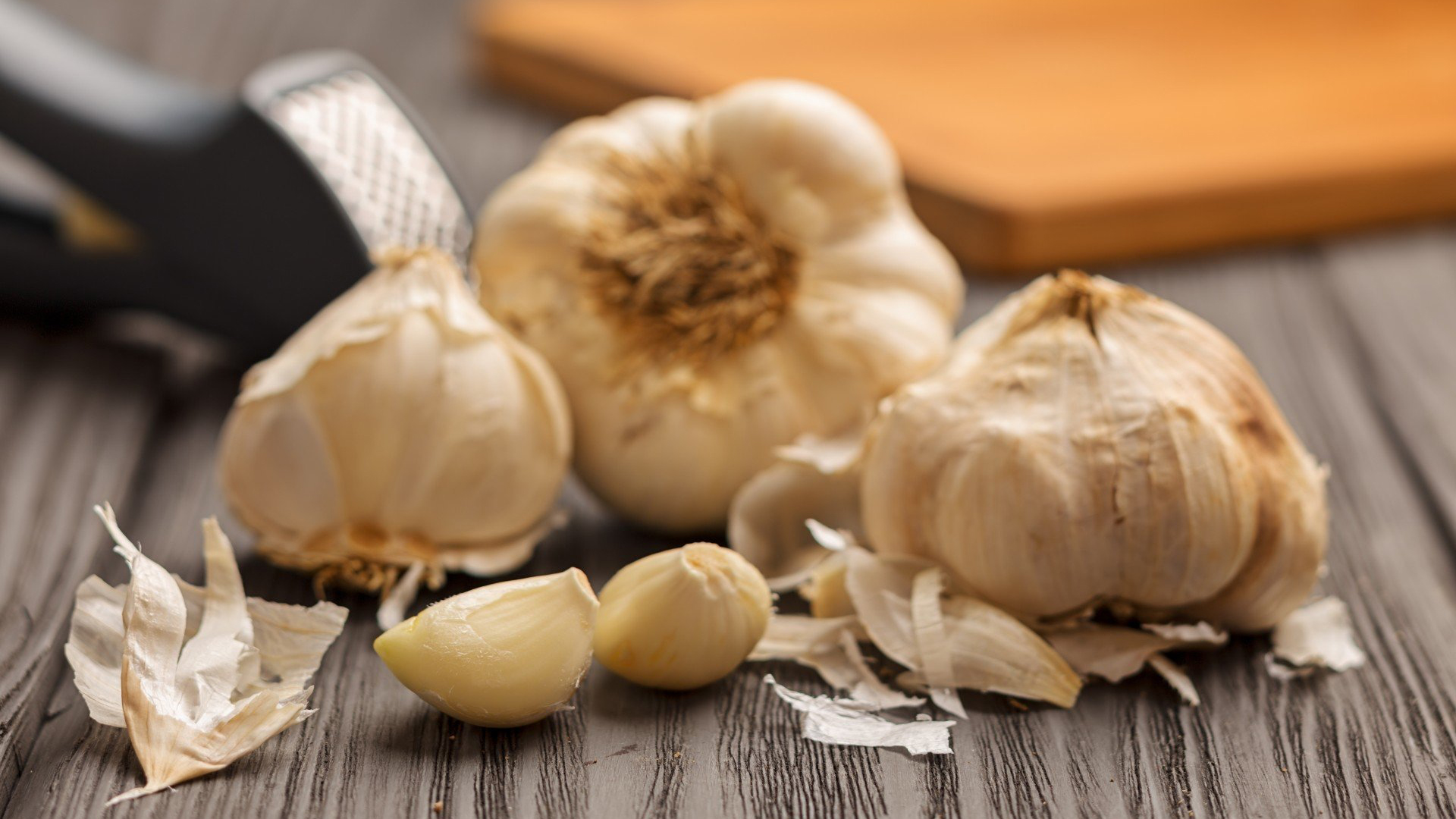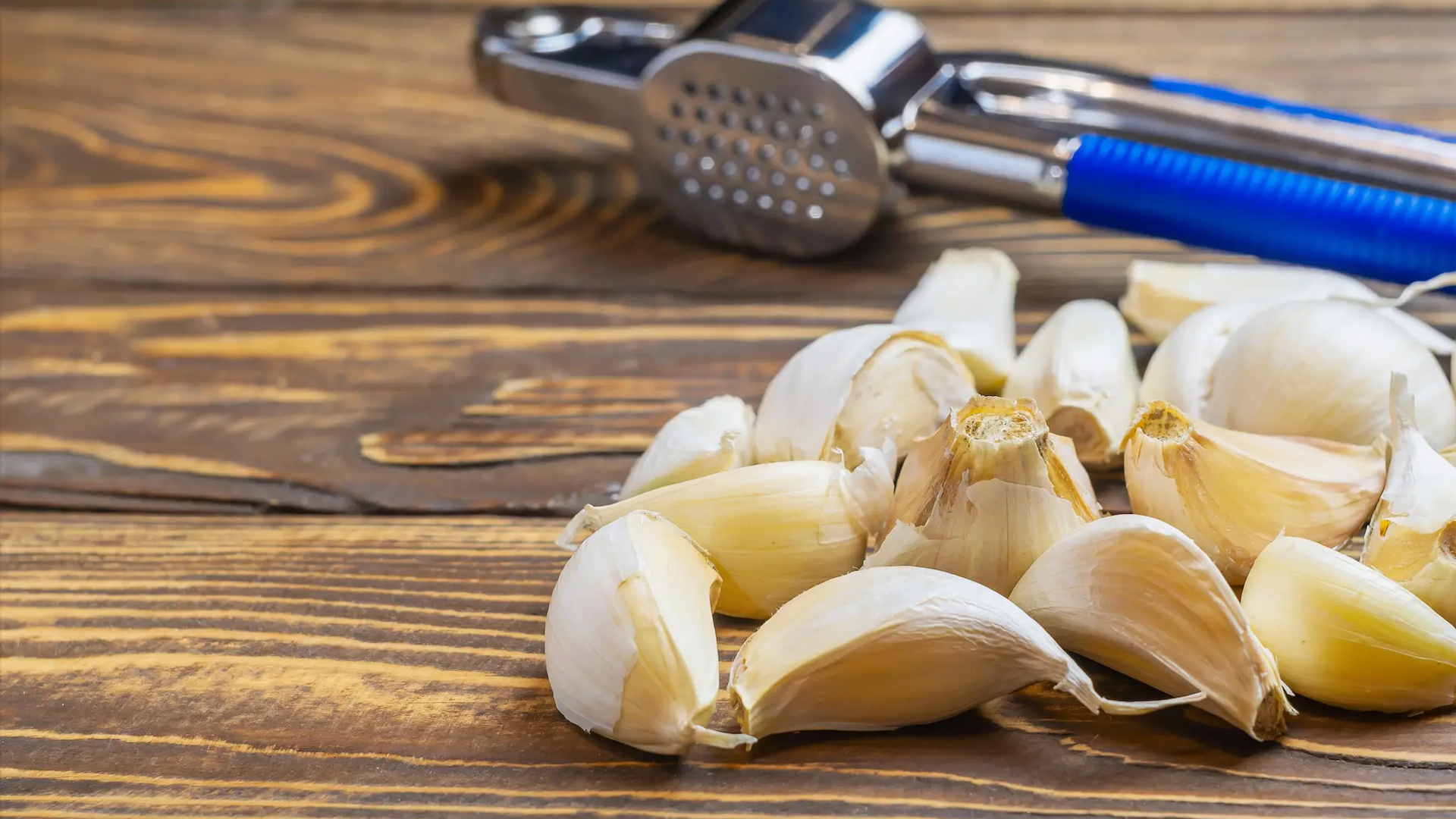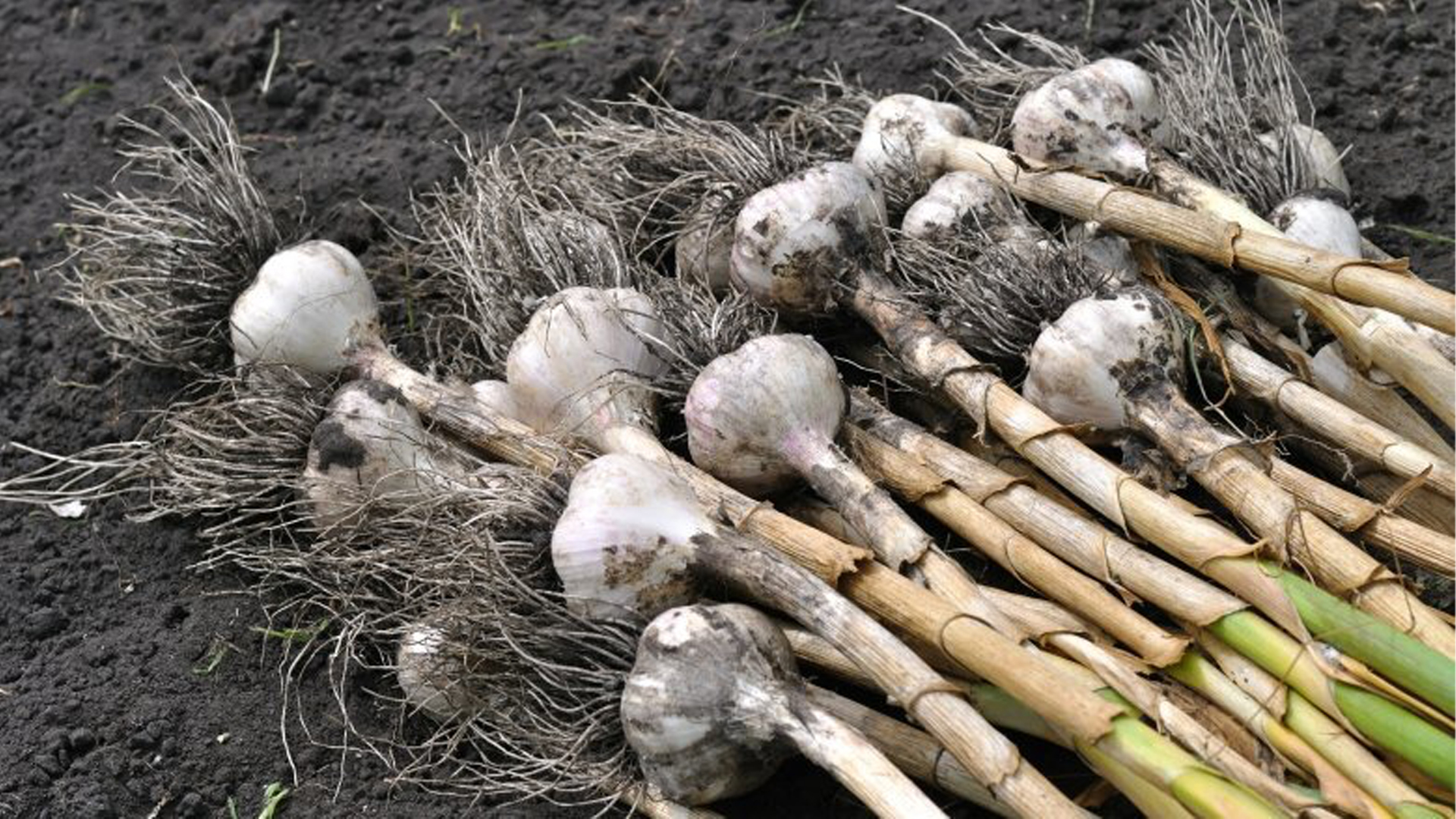In celebration of National Garlic Day on April 19th, there are few flavors more synonymous with Italian food than garlic. The pungent, peppery bulb has been a big part of Italian cuisine for centuries. Although it originated in central Asia, Egyptians began cultivating garlic some 5,000 years ago and it had arrived in Italy by the time of the Roman empire.
Garlic is part of the allium genus that includes onions, scallions, shallots, leeks, and chives. These were generally easily grown and accessible foods, providing flavor at an economical price point. Or put another way, garlic was a cheap way of masking the flavor of not very good food.
Wealthy Europeans from the Roman era through the 19th century had access to spices and flavors imported from Asia. These included things like black pepper, which arrived by the way of the silk road trade routes, and for which Marco Polo and Christopher Columbus were both seeking on their journeys of exploration. Garlic was the poor man's flavoring.
Garlic as Panacea

It's rare a sick Italian American child hasn't been fed a pastina soup rich with garlic. Often lovingly referred to as "Italian Penicillin," soup made with broth and small pasta is often served to the sick, but the real miracle cure here is the garlic. Indeed, the bulb is a natural antibiotic, and it’s thought garlic helps improve the immune system.
Unsurprisingly, before the arrival of Italian immigrants, Americans typically saw garlic as a medicinal herb rather than a flavoring. When crushed or chewed, garlic releases allicin, a sulfurous compound that can disrupt pathogens.
When the Spanish Flu arrived in Italian immigrant neighborhoods, one defense was to cut open garlic or an onion to allow the bulbs to absorb the bad air. There is little evidence this actually worked.
However, there is some modern science suggesting garlic consumption may reduce the risk of developing certain cancers and relieve hypertension. Garlic is also good for digestive health
Garlic as an Italian Slur

Italian Americans seemingly had something to celebrate when baseball legend Joe DiMaggio was featured on the cover of the 1939 issue of Life magazine. Frequently denigrated in the early 20th century, Italian Americans turned to national heroes like DiMaggio to change attitudes. The victory was short-lived. While prominently featured on the cover, the article's writer stated of DiMaggio: "Instead of olive oil or smelly bear grease he keeps his hair slick with water. He never reeks of garlic."
Garlic was long associated with Italian immigrants in the United States because it was the flavor of the poor. It was seen as particularly pungent by non-Italians, and sometimes it was known as "Italian perfume." Back in 1912, reviewers of Antonia Isola's Simple Italian Cookery, one of the first Italian cookbooks published in English in the United States, were even surprised the recipes included more than "garlic and macaroni," suggesting there was an expectation that it was fundamental to Italian cooking.
Garlic, of course, was a big part of southern Italian cooking. It arrived along with Italian immigrants settling in America. Italians at the time, and even still today, are unlikely to include both onion and garlic in their cooking. Garlic was pervasive in southern cuisine, though, flavoring sauce and pasta dishes in classic red sauce joints, as well as pizza. And it was for this reason, Italian immigrants were often known as "garlic eaters."
The derogatory slur came about in the United States with the arrival of Italian immigrants. However, Italians were not the first people to be known as "garlic eaters." According to Robin Cherry in Garlic: An Edible Biography, as far back as ancient Rome, Jewish people were known as garlic eaters. For a time, it was a term they used themselves, but it took on a derogatory meaning when emperor Marcus Aurellius returned from Palestine and maligned the local Jewish population. That did not prevent southern Italians from adding garlic to many dishes in the centuries to come.
Garlic Goes Mainstream

One reason Americans of northern European descent found the flavor of garlic so strong was their mothers never ate it. The flavors of garlic can pass from mother to fetus, and mothers who eat garlic while pregnant are more likely to have children who like the taste of garlic.
Garlic in the United States is much more prevalent today than it was a century ago and the reason is pizza. Pizza grew in popularity in the mid-century, and most of those pizza pies were sold with at least a little bit of garlic in the sauce. With more people eating garlic, more pregnant mothers began eating garlic when they ate pizza, even if they weren't aware of it. The result was that over time, more of the general population had developed a fondness for garlic and the flavor in the United States became less foreign and more ordinary.
Garlic of course is an important ingredient in many other cuisines, especially those in Asia where it is often combined with ginger.
Garlic as a Controversy

Marcella Hazan, author of Essentials of Classic Italian Cooking, was known for vocalizing her opposition to overuse of garlic. Hazan helped reinvent the idea of Italian cuisine in the United States. She taught classes, wrote extensively about the food, and ushered in a new era of modern Italian cuisine in America that was less focused on southern-inspired red sauce dishes and more focused on northern recipes. While garlic still has a role in some of those dishes like Genovese pesto, the flavor is much more common in southern cooking.
Today, modern Italian cuisine still relies on garlic, but there is a growing opposition to it. Back in 2007, chef Filippo La Mantia raised a stink over the bulb. He was head Chef of La Trattoria in Rome, a Sicilian-inspired restaurant. According to NPR, La Mantia claimed garlic was a relic of the past when Italians were impoverished. Instead, he prefers other Sicilian flavors like citrus. The anti-garlic movement had other supporters too, like former Prime Minister Silvio Berlusconi.
In another controversial moment a few years later, in 2015, celebrity chef Carlo Cracco revealed his secret ingredient for pasta alla Amatriciana. In front of a national television audience, Cracco had the audacity to add garlic to the revered recipe.
Amatriciana originates in the town of Amatrice, although today it is considered one of Rome's essential pasta sauces. Cracco's sin inspired the mayor Amatrice to release an official recipe made of guanciale, pecorino, white wine, San Marzano tomatoes, and red and black pepper. Amatriciana is a more complex version of the ancient Gricia, which includes the same ingredients without tomatoes and chili pepper, both the result of the influx of new plants following Columbus's expedition to the Americas. Gricia is sometimes known as white Amatriciana. Cracco eventually issued an apology.
Ian MacAllen
Ian MacAllen is America Domani's Senior Correspondent and the author of Red Sauce: How Italian Food Became American. He is a writer, editor, and graphic designer living in Brooklyn. Connect with him at IanMacAllen.com or on Twitter @IanMacAllen.

